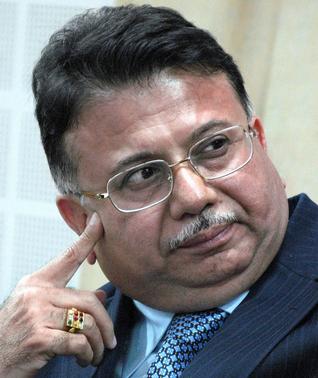Appointments in the higher judiciary must be based on merit and reflect social diversity
Ajit Prakash Shah
There is a strong perception among various stakeholders that the appointment of judges is being dictated by extraneous considerations. Merit and competence are only secondary. The recent elevation of two high court chief justices to the Supreme Court by overlooking other, more senior, judges is the latest incident in this saga.
The Gujarat high court bar association (HCBA) passed a resolution “protesting” the overlooking of the “legal competence, honesty, dedication and steadfastness’’ of its present CJ Bhaskar Bhattacharya. It is widely understood that Bhattacharya’s appointment to the SC was overlooked because a collegium member bears personal animosity against him.
A similar note of discontent can be seen in the resolution passed by the Madras HCBA protesting against the opaque manner in which the latest batch of judges were proposed to be appointed. Regardless of the truth in these rumours, their existence in itself is deeply disconcerting. A just institution must not only be fair, but it must also appear to be fair. These controversies do not augur well for the Indian judiciary.
All stakeholders must work together to revamp the present system of appointing judges, which is through a collegium – the five senior-most judges decide who is eligible to be appointed. The system was well intentioned and, in all fairness, did solve the problem of excessive executive intervention in the appointment process. However, it has been a solution that has proved much worse than the disease.
These incidents should be seen as providing some impetus towards establishing a judicial appointments commission (JAC) to conduct the process of appointment. It is learnt that the JAC would consist of six members – two sitting judges, a government representative, a representative of the leader of opposition and two eminent jurists.
In recent public debates over the JAC’s composition, there appears to be a particular discomfort in having politicians as part of the panel. Disturbingly, however, there has been no public debate on the other, equally pressing, issues that arise. Merely setting up a JAC, without anything more, cannot solve present problems plaguing the appointment issue. To think of it as a panacea would be to repeat the mistake committed in instituting the collegiate system, especially given the complete absence of any defined criterion by which appointments should take place.
In the absence of norms, a JAC would only change the circle of high priests, leaving untouched the mystique behind the sacred ritual of appointments. To devise an appropriate solution, it is imperative to look at the intended rationale in establishing a JAC, and identify the norms on which it would work.
A system of appointment should guarantee its independence from inappropriate politicisation, strengthen the quality of appointments made, promote diversity and therefore sustain public confidence in the judicial system. The objective should be to remove patronage and ensure that judges are appointed on the basis of their qualifications.
It is important to delineate the JAC’s powers to ensure a balance between independence and accountability. Should the JAC be an “appointing” or only a “recommending” authority? If the latter, how and in what way should its recommendations matter in the process of appointment? In case the JAC takes over full responsibility for making appointments, it removes the danger of inappropriate influence by politicians, but it also weakens democratic accountability and lacks a potential check on abuse, corruption or incompetence on the part of the commission.
These advantages and disadvantages are reversed under a recommending commission. Therefore, one might look to adopt a hybrid model where the JAC makes a binding recommendation, which may only be rejected in cases where the candidate is disqualified or in cases where the procedure is legally flawed. The reasons for such rejection must also be recorded in each case.
The JAC should also aspire to achieve institutional and procedural transparency. This is particularly important in any new system of judicial appointments, given the recurring criticism of the old system that it involved a high level of secrecy. Transparent procedures are therefore a critical test of its legitimacy.
A similar commission in South Africa, for instance, has made efforts to ensure that the selection process for interviews is as open as possible. The statutory provisions provide that when a vacancy arises the commission must advertise the post and seek nomination from a wide variety of sources. The names of candidates shortlisted for interview are made public and the views of relevant stakeholders are canvassed. Similarly, in the UK, the appointing commission publishes an annual report and posts the names of the selected candidates on its website.
There is a need to preserve and, if possible, to improve the professional and personal quality of judges. Therefore, merit should be given due importance. Yet, it is equally important to consider social diversity in public institutions and the need to include hitherto under-represented groups – not just backward classes and minorities but also women. This policy aim will engender greater public confidence in judges.
The way in which judges are appointed embodies a set of democratic values. Choosing judges based on undisclosed criterion, in largely unknown circumstances, reflects an increasing democratic deficit and must be abandoned. We do not need a reactionary move setting up a JAC merely for the sake of it, for that would achieve nothing. We need a well thought out and consultative process of selection with identified norms and criterion. Tackling these issues will require a fresh approach to, and a major re-engineering of, the process of appointment.
The writer is former chief justice of the Delhi high court.

Source- Editorial in Times of India, July10
Related articles







Leave a Reply